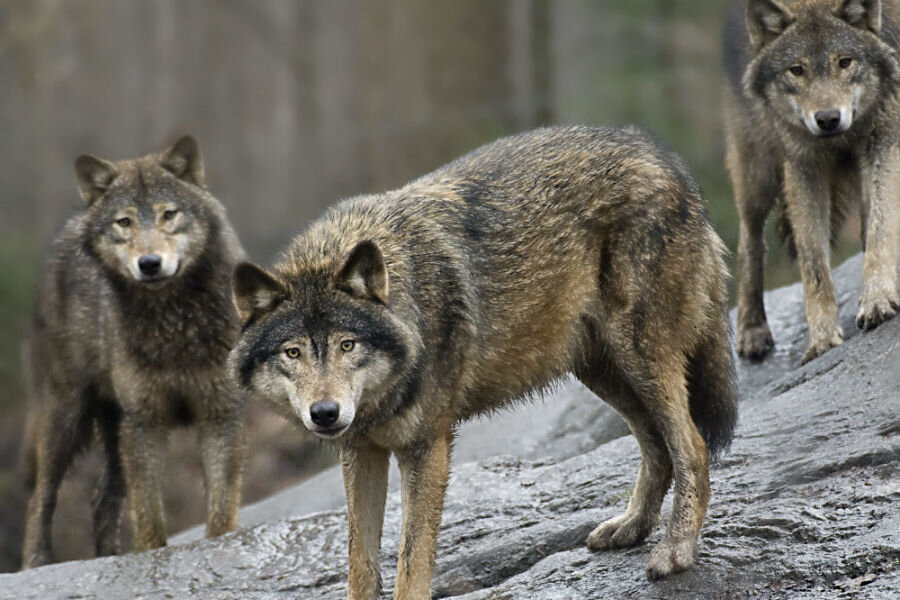What can wolf dialects say about human language?
A recent study on the howling patterns of wolves, dogs, coyotes, and other canids shows that different species' howls vary markedly, and could shed light on how the social family of animals communicates.
The study, published in the journal Behavioural Processes, aimed to analyze the vocal processes for species across the Canidae taxonomic family, which is comprised of wolves, coyotes, foxes, jackals, and dogs. Researchers took more than 2,000 howl samples from around a dozen canid species and fed them into a computer algorithm to look at how the various calls differed, and how they can be distinguished.
What they found was that howls, while varying in pitch, frequency, and fluctuation, could be grouped into 21 distinct types that correspond with different species. With each species making its own use of the different howl types, in a manner similar to human dialects, the researchers say the information could help better manage wild canine populations and track the animals in new ways.
“We found that different species and subspecies showed markedly different use of howl types, indicating that howl modulation is not arbitrary, but can be used to distinguish one population from another,” the researchers wrote in the study's abstract. “We believe that quantitative cross-species comparisons such as these can provide important understanding of the nature and use of communication in socially cooperative species, as well as support conservation and management of wolf populations.”
The howl classification process was completed using machine-learning algorithms, or pattern recognition programs that can “learn” from large sets of data. A release from the University of Cambridge, whose zoology department is the home of the study's lead researcher Arik Kershenbaum, states that while previous similar studies involved subjective human pattern recognition, the computers used in this investigation were able to objectively analyze the howl sound waves to definitively mark the “characteristically different repertoires of howl type usage.”
One discovery the researchers made was that species with similar howl types may be at risk of accidental communication and breeding. For example, the vocabulary of the endangered red wolf is comparable to that of coyotes, and recent efforts to reintroduce red wolves in the US has failed partially due to a hybridization between the two canids.
“The survival of red wolves in the wild is threatened by interbreeding with coyotes, and we found that the howling behavior of the two species is very similar. This may be one reason why they are so likely to mate with each other, and perhaps we can take advantage of the subtle differences in howling behavior we have now discovered to keep the populations apart,” Dr. Kershenbaum said.
While the computers used in the study were able to discern what the different howl types were across the species, it is still unclear what they actually mean to wolves, although other studies have suggested that their purpose is related to dominance, relationships, and pack communication.
“We are currently working on research in Yellowstone National Park in the US using multiple recording devices and triangulation technology to try and pick up howl sounds and location. In this way we might be able to tell whether certain calls relate to distance communication or pack warnings, for example,” Kershenbaum said.
The study’s results will mainly go on aid in the study of canid correspondence, but the researchers stated that the information could “provide important understanding of the nature and use of communication in socially cooperative species," including humans.
“The presence of complex referential communication in species that must communicate to survive was probably a crucial step in the evolution of language,” said Kershenbaum. “I think we can shed a lot of light on early evolution of our own use of language by studying the vocalization of animals that are socially and behaviorally similar to us, if not necessarily taxonomically closely related.”





